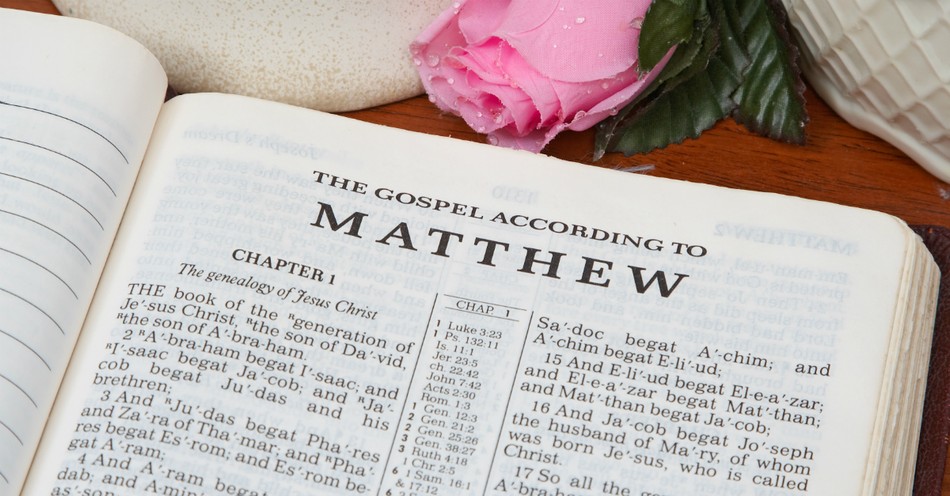Claims to fame: Matthew works as a tax collector before meeting Jesus. He becomes an active follower/disciple of Jesus. Matthew invites over his “sinner” friends to meet Jesus. He agrees to serve as one of the 12 apostles.
Matthew travels extensively with Jesus and the apostles. He is an eyewitness of Jesus Christ’s ascension. He becomes a bold evangelist during Pentecost. Matthew goes to jail with the other 12 apostles. He serves the Lord in Judea and other regions and writes the leading Gospel of Jesus Christ.
Worst betrayal: Matthew flees when Jesus is arrested in Gethsemane and doesn’t witness Jesus’ crucifixion at Golgotha.
Matthew with Jesus
During His itinerant public ministry, Jesus draws great crowds to hear Him teach and preach and perform miracles. Hundreds of these followers become His disciples.
From these, Jesus chooses a dozen to be His closest disciples. They become known as the 12 apostles.
These men — Peter, James, John, Andrew, Matthew, and seven others — have the incredible opportunity and privilege to travel and work alongside Jesus.
They hear all of His teachings, witness His miracles...and slowly discover that Jesus truly is God’s Son, the Messiah, the Savior of the world.
Starting on the Day of Pentecost, these same men become bold and fearless witnesses of Jesus’ resurrection from the dead, numerous appearances, and ascension back to heaven.
Filled with the Holy Spirit, they travel throughout the known world telling one and all about their Savior and Lord.
Three of these apostles — Matthew, John, and Peter — also help write the New Testament. That way future generations, including ours, could know and believe the Good News as well.
Matthew’s Gospel
This first book in the New Testament challenges us to trust Jesus Christ as Savior and obey Him as Lord.
As an apostle, Matthew writes as an eyewitness of Jesus’ itinerant ministry, resurrection, and ascension. Tradition says Matthew travels far and wide proclaiming the Good News of Jesus for more than 30 years — until he is martyred for his faith.
Many of Matthew’s original readers may have wondered if Jesus is truly the long-awaited King of the Jews.
In this gospel, Matthew frequently refers back to the Old Testament writings to prove that Jesus is the Messiah, the Christ, the Anointed One.
In this book, Matthew speaks about his calling and first evangelistic dinner party:
As Jesus went on from there, he saw a man named Matthew sitting at the tax collector’s booth. “Follow me,” he told him, and Matthew got up and followed him.
While Jesus was having dinner at Matthew’s house, many tax collectors and sinners came and ate with him and his disciples. When the Pharisees saw this, they asked his disciples, “Why does your teacher eat with tax collectors and sinners?”
On hearing this, Jesus said, “It is not the healthy who need a doctor, but the sick. 13 But go and learn what this means: ‘I desire mercy, not sacrifice.’ For I have not come to call the righteous, but sinners” (Matthew 9:9-13).
His appointment as an apostle:
These are the names of the twelve apostles: first, Simon (who is called Peter) and his brother Andrew; James son of Zebedee, and his brother John; 3 Philip and Bartholomew; Thomas and Matthew the tax collector; James son of Alphaeus, and Thaddaeus; 4 Simon the Zealot and Judas Iscariot, who betrayed him (Matthew 10:2-4).
And much more.
There are very famous passages in this gospel, which include the Christmas story (Matthew 1:18-2:23), the Beatitudes (Matthew 5:3-10), Jesus’ prayer promise (Matthew 7:7-8), Jesus’ invitation to rest (Matthew 10:28-30).
Other important passages include Peter’s confession of faith (Matthew 16:13-20), Jesus’ discourse on the end of the age (Matthew 24:1-44), Jesus’ resurrection from the dead (Matthew 28:1-10), and the Great Commission and ascension (Matthew 28:18-20).
Matthew’s Relevance
Do you like going to banquets? Jesus did! He enjoyed the opportunity to meet new people and whet their appetites for the Kingdom of God.
The gospel accounts make it clear that Jesus loved to have others — friends, disciples, new converts, even religious leaders opposed his ministry — throw parties for Him.
In His preaching and teaching, Jesus spoke of the feast in the Kingdom of Heaven and how great it will be for those who accept His invitation.
He also warned of how terrible it will be for those who are excluded because of their unbelief.
In the first three gospels, we learn that Jesus calls Matthew to become one of His disciples. Matthew must have been shocked.
After all, Jewish teachers normally weren’t willing to associate with tax collectors and other “notorious sinners.”
After overcoming his initial shock, Matthew immediately gives up his lucrative tax-collecting business and hosts a huge banquet that evening.
The banquet isn’t in Matthew’s honor — a retirement party of sorts. Instead, Matthew somehow knows Jesus wants to meet his friends. So, he invites them all over to his house.
Sure enough, word about Matthew’s party made its way to that city’s religious elite, who condemn Jesus.
Jesus uses their harsh criticisms, however, as an opportunity to demonstrate His love and compassion for the “scum” of the earth.
Like Matthew, you and I have work associates, friends, neighbors, and relatives who don’t know the Lord yet. Some may be rather shady characters.
Then again, the Lord loves them and wants us to invite them over and find a way to introduce them to the Savior.
Scriptures about Matthew
If you’re going to read only three Bible passages about Matthew (also known as Levi), take a few minutes and read Matthew 9:9-13, Mark 2:14-17, and Luke 5:27-32.
Matthew is listed with the other 12 apostles in Matthew 10:2-4, Mark 3:16-19, and Luke 6:14-16, and once more in Acts 1:13 (minus Judas Iscariot, of course).
Best of all? Imagine Matthew with the other apostles throughout the gospels and Acts 1-12 and Acts 15. He was quiet, but he saw and heard almost everything. Talkative Peter probably filled him in on the rest, including Matthew 17:1-13 (Mount of Transfiguration).
For further reading:
What Is the Story and Meaning of the New Testament?
What Did Jesus Mean to 'Go and Make Disciples’?
How Can I Identify Messianic Prophecies in the Old Testament?
How Did Jesus Bring People Together More Than Ever Before?
Who Were the 12 Apostles in the Bible?
What Were the Key Events in the Life of Jesus Christ?
Photo Credit: ©iStock/Getty Images Plus/dvest









